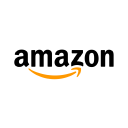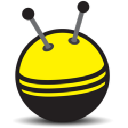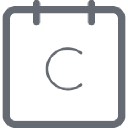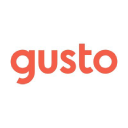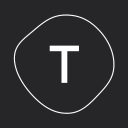
How We Launched A $1K/Month FINRA SIE And FINRA Series 7 Test Prep Tool For Professionals
Hello! Who are you and what business did you start?
Hi, my name is Tyler York and I’m one of the founders of Achievable, a test prep company focused on career-advancing professional exams.
We have a platform that offers rich textbook content, reviews backed by a memory science algorithm, and full practice exams to help students prepare for their exams. Our motto is “learn by doing”, and we believe that we’ve built the best platform for training people to pass tests. Our flagship product is the FINRA SIE and FINRA Series 7 exam courses, and we have recently added a GRE course, and a USMLE Step 1 course is coming in the fall.
Our goal is to take the guesswork out of test prep. With Achievable, you study, you follow our program, you know where you stand, and when you’re ready - you succeed. That’s the Achievable difference.

What's your backstory and how did you come up with the idea?
The idea for Achievable came from my cofounder Justin, an engineering leader who built the product and team behind Cerego, a platform for lifelong learning. Cerego used a method called spaced repetition to help students memorize large bodies of knowledge over time, like a new language or the periodic table. Spaced repetition is very powerful and effective, but only when the student is committed and can stick to the schedule. We saw an opportunity to take this technological innovation to a highly motivated consumer segment: professionals preparing for life-changing, income-gating, career-advancing exams.
You can save yourself a lot of time, money, and headache by spending the extra time to really understand each market and each customer within that market to find the truly best customer to build for.
As it turns out, most of the test prep industry is far behind what we’d consider standard user experience today, especially on mobile. While some more consumer-focused segments like the SAT market are pretty far along, the professional market has languished. Even in 2020, many of our competitors don’t have true mobile experiences or any kind of ‘adaptive learning’ that has become the de facto standard of test prep software.
We started in 2016 supporting students at broker-dealers and wealth management firms who wanted to pass the FINRA Series 7 exam. Wealth management is one of the highest paying careers that are accessible to people without an elite education or background. Once they get the job, anyone who performs well can become a highly successful - and wealthy - person. The thing that often stood in the way of this was the FINRA tests, which students must pass before they can begin interacting with financial clients. We started Achievable to help students pass these exams and democratize this wealthy career path for everyone.
Take us through the process of designing, prototyping, and manufacturing your first product.

When we started Achievable several years ago, we structured it around three main objectives: acquisition (learn the material), retention (review the material), and execution (get the problem right on the exam). These same concepts still core to our business today.
That said, Achievable’s product experience has changed quite a bit from when we started. Initially, Achievable was entirely bite-sized. The content was bite-sized, and then the reviews of that content that you received were bite-sized. Our course contained the entire material you needed to pass the test, but it wasn’t presented in the traditional textbook format. Each concept was instead taught one at a time. This was jarring for students and created constant questions on whether this was really a course or just a flashcard app.
Ironically, the approach totally worked - we ran two efficacy studies at two different Fortune 500 banks, and each was successful. We saw a score uplift from using Achievable that directly correlated to how much time students spent using it, and it was substantial (15% increase in the score - almost too good to be true). But we could never shake the impression that we were ‘just a flashcard app’ with our UX as it was.
So we relaunched Achievable in 2019 with a more traditional student experience: a full digital textbook, reviews, and practice exams. Since then, we’ve been off to the races.
Describe the process of launching the business.
With our initial launch in 2016, we really had no idea what we were doing. I was new to the education and test prep markets, and I was still relatively new to sales. So we did what any sensible person would do, and followed in the footsteps of the incumbents.
We launched a two-man B2B sales operation that spanned the entire US. Luckily for us, FINRA firms have to be registered and displayed publicly on the FINRA website, so our customer list was literally a list online on that website. We combed through it and built lead lists for each customer segment, organized by company size.
We cold-called and emailed incessantly for over 6 months. And in the end, we got surprisingly good results - we had pilots with two wealth management firms that each had over 50,000 employees, and a smattering of small companies on board. But the revenue was never consistent and we ran into countless roadblocks as a small startup trying to make headway internally at massive, old school firms.
In 2018, we had an opportunity to remake the business and business model. FINRA announced that they were taking our flagship test, the FINRA Series 7, and splitting it in half. The first half, the FINRA SIE, could be taken without sponsorship from a financial firm. This was a big deal - before, finance firms had to hire you, then pay for you to spend 6 weeks trying to pass the Series 7, and then if you failed twice, they usually fired you. This meant that the financial firms bought all the test prep for Series 7 and distributed it to students. Now, with the FINRA SIE, students could buy their own test prep and take the course on their own - before applying for a finance role. We saw a window - we could leverage our better product and modern marketing know-how to go completely B2C and make our competitors fight on our turf.
We rebuilt the product in 2018-2019 to this end, and have since created a durable and fast-growing B2C business for the FINRA SIE.

Since launch, what has worked to attract and retain customers?
When we relaunched as a consumer product in 2019, we had a better idea of how to start, but still had a lot to learn. Consumer digital marketing is a known space, with only a few major avenues of attack: content marketing and SEO, advertising, affiliates and influencers, and communities. We tried each in turn and found that all four avenues could be successful to varying degrees, but where we really hit our stride was in content marketing and affiliates.
When you’re starting a business, it’s important to prioritize. Most marketing things can and will work for Apple, Sony, etc - because, to work, each requires a mix of product-market fit, good messaging, brand, and money. Big companies have all four things in spades, usually (that’s why they’re a big company). For a startup, you’re often trying to figure out what channel you can make the most headway in for the least effort leveraging one or two of those ingredients. The goal isn’t to find what works - it’s to find what works best and gets you the best ROI for your money and time.
To this end, we found affiliates to be an excellent source of kindling for the fire you’re building. Affiliates bring a lot to the table - an existing audience, the product-market fit between their content and their audience, and a brand. You’re trading money, typically 30% of each sale (varies by industry), to borrow these attributes for your benefit. We found that this was the most effective way to quickly spin up a new line of business and get customers in the door. Affiliate marketing was almost half of our sales at the beginning of Achievable SIE, though now it is less than 10% as we have built out our other channels.

Content marketing is a different story. It is still the most effective way to build repeatable, durable inbound sales for an online business. But it’s a heavily competitive and well-known space - even your biggest and oldest competitors are likely doing it by now. The best way I’ve heard content marketing and SEO described is by Bernard Huang of Clearscope.
To paraphrase, he said “Content marketing is a commitment. You either know you need to do it, in which case buckle up for 2+ years of hard work, or you don’t need to do it and shouldn’t do it at all.” We knew that we had to build it because it is the #1 way that all of our competitors get customers. We’re still just 6 months into our content marketing journey, but the sales and traction we’re already seeing have made it clear that this was the right call for us.
How are you doing today and what does the future look like?
Achievable is growing quickly, with a substantial portion of our sales coming from repeat customers and word of mouth referrals. We know from our amazing customer reviews that we’ve built a good product - now the challenge is gaining market share.
In the short term, we’ve launched a GRE course and are about to launch a USMLE Step 1 course in the fall. These expand our business from one vertical to three, giving us a much broader scope and addressable audience, especially with the GRE. Our biggest challenge comes from the difficulty of challenging incumbents in any test prep market. Test prep is a risk-aversion purchase: students would much rather buy something tried and true than ‘risk’ their score trying an innovative new product.
This means that the initial launch is a grind, but as we build out our content marketing strategy and reputation within a vertical, it gets easier over time. We went through this with the FINRA line of business and rolled over our learnings to the GRE business. We’re in the process of that now for the GRE and will roll over what we learned this time to the USMLE business in the fall.
The entrepreneurship journey is long. You should be prepared to work in this company for 10 years. That means you’re going to be dealing with every aspect of this business for the next 10 years, so you better like what you’re getting into or be passionate about changing it.
The good news is that our margins are low - we’re software-only and don’t have much to pay for beyond salaries, servers, and marketing. Our growth continues to accelerate month-over-month and we’re increasing our customer lifetime value by releasing add-ons and additional test prep in the same vertical. We’re still focused on the US, but now see more international students trying Achievable since we released the GRE. It’s exciting and we feel like we’re just at the beginning, even four years after we started.
Through starting the business, have you learned anything particularly helpful or advantageous?
By far, our biggest shortcoming was in our preparation and research.
We spent two months evaluating potential markets to enter for our first test prep vertical. We evaluated things like our competition, the student’s commitment to passing, and the expected business model of each vertical. But our research had major blind spots. For instance, we assumed that a better product was all it took to win in a market - we didn’t account for what the FINRA customer actually wanted, which was a long track record of success. Suddenly not a great first market for a startup, right?
Also, our research began and remained very narrow throughout, and we never thought to expand the definition of ‘what will this product be successful at’ based on the customer, not the market. What I mean by that is, we looked at ‘what are the best professional test prep markets’, not ‘what are markets where customers are motivated, willing to spend money, and want to learn online’.
This was proven out when we met Aceable, another test prep company that ended up taking over the online driver’s education test prep market. It checks all the boxes of what makes a good product-market fit for Achievable, but we never found it because we were looking for professional test prep and not evaluating based on the characteristics of our ideal customer.
If I could leave the reader with any advice, it’s that an ounce of prevention (market research) is worth a pound of cure (go-to-market work). You can save yourself a lot of time, money, and headache by spending the extra time to really understand each market and each customer within that market to find the truly best customer to build for. That will make everything that comes after easier, and is well worth the effort.
What platform/tools do you use for your business?
We use Everhour to track our time spent on Achievable, which has a nice integration with Asana that we also use. Time tracking seems onerous and invasive at the beginning, but after that initial shock, we found that increased accountability and transparency really helped both of us stay motivated.
Time is your most valuable resource as an entrepreneur, and you should measure it like you measure your other KPIs. This isn’t to say ‘work more hours’ - transparency about how long things take can help you make decisions about what activities are the best time ROI for your business.
We’ve also had a lot of success leveraging our time with freelance help. Freelancing has come a long way since the early days of the web and is now pretty easy to get spun up and productive for you. We’ve used both LinkedIn recruiting (search ‘freelancer’ + your keywords) and Upwork to hire high-quality freelancers that made a big impact.
What have been the most influential books, podcasts, or other resources?
Noah Kagan has had a big influence on me, especially as he’s shared the ups and downs of entrepreneurship life. I like that he’s really about his own challenges and shares what he learned objectively. Not a lot of entrepreneurs or ‘marketing gurus’ share the nitty-gritty, and it’s important to remember that even successful entrepreneurs had challenges.
Advice for other entrepreneurs who want to get started or are just starting?
In addition to my advice on market research earlier, I recommend talking to your potential target customers early and often. Actual conversations with real potential customers will help you so much more than research through a computer.
Another important thing that I wish I’d known when I started is that the entrepreneurship journey is long. You should be prepared to work in this company for 10 years. That means you’re going to be dealing with every aspect of this business for the next 10 years, so you better like what you’re getting into or be passionate about changing it.
Know that you’re going to fail, and that’s okay. You’re going to be doing multiple jobs at a time, juggling a lot, and not having the time to do each job properly. Sometimes, you won’t even have time to learn the right way to do that job before you have to start. Don’t worry and do it anyway - that’s the entrepreneurial way. This is especially important for perfectionists or people who have only worked at larger companies where they were successful far more often than they were not. These people might not be used to switching to an environment where they’re failing 70% of the time or more.
Remember that this is normal and the goal is to try things, see if they work and if they don’t - move on. We love The Cult of Done Manifesto and have it up on our office walls as a constant reminder of this.
So entrepreneurship is long, it’s difficult, you’ll fail a lot, and you won’t know what you’re doing. How do you handle all of the stress that comes with that? With a community that can support you. Entrepreneurs often have a lonely job and few people they can turn to for advice, let alone to vent about the tough times. Finding a community of entrepreneurs that you can share your journey with can give you the support you need to succeed.
Are you looking to hire for certain positions right now?
We’re not looking for full time hires right now, but are always interested in meeting high-quality people and freelancers that are excited about our mission. If you’re interested, please contact us.
Where can we go to learn more?
If you have any questions or comments, drop a comment below!

Download the report and join our email newsletter packed with business ideas and money-making opportunities, backed by real-life case studies.

Download the report and join our email newsletter packed with business ideas and money-making opportunities, backed by real-life case studies.

Download the report and join our email newsletter packed with business ideas and money-making opportunities, backed by real-life case studies.

Download the report and join our email newsletter packed with business ideas and money-making opportunities, backed by real-life case studies.

Download the report and join our email newsletter packed with business ideas and money-making opportunities, backed by real-life case studies.

Download the report and join our email newsletter packed with business ideas and money-making opportunities, backed by real-life case studies.

Download the report and join our email newsletter packed with business ideas and money-making opportunities, backed by real-life case studies.

Download the report and join our email newsletter packed with business ideas and money-making opportunities, backed by real-life case studies.
